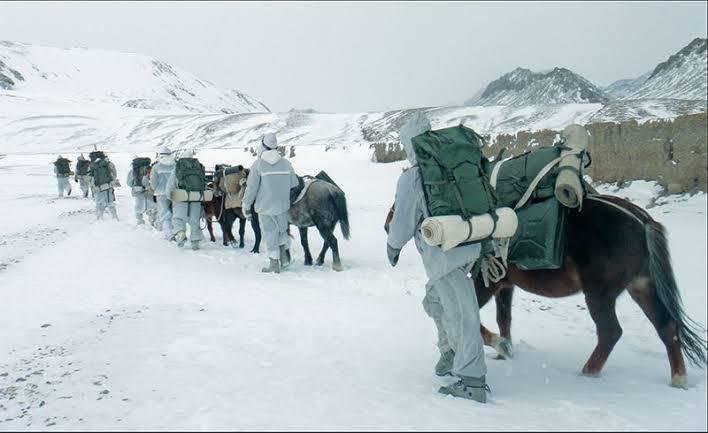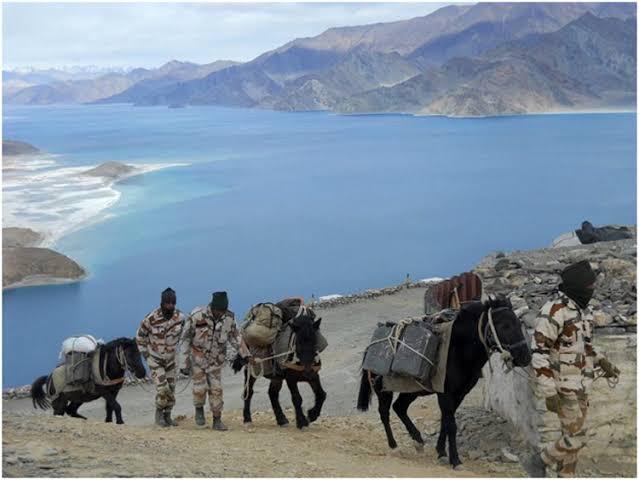AT- THE SILENT ARM OF ITBP
BY-
DIG (Dr.) SUDHAKAR NATARAJAN
ITBP
A dedicated animal transport (AT) wing is an inbuilt part of all border guarding units of Indo-Tibetan Border Police (ITBP) tasked to operate in high altitude sub-zero terrain for supply of ammunition, rations, water and other stores. The logistic convoys, consisting of ponies and troops, have a very pivotal role in keeping the AOM (axis of maintenance) alive in areas where no roads exist.
Not much is written or known about the excruciatingly tough task performed by the ponies of ITBP in the Ladakh, Kumaon, Garhwal, Himachal Pradesh and Northeastern areas bordering with China.
When air support fails due to bad weather, it is the AT boys who get going to ensure that the troops at the border outpost (BOP) get their rations to sustain themselves in this unforgiving terrain and are replenished with ammunition to guard the icy borders. All air drops at the dropping zone (DZ) are collected by these ponies. Fresh drinking water, in freezing cold desert terrain, is worth its weight in gold, and the ITBP AT ensures this basic necessity is satiated to sustain troops at windswept BOPs.
The ponies are the virtual lifeline for ITBP troops at the borders. When border incidents take place, it is the AT that saves the day for India, by ensuring that the troops engaged in eye-ball-to-eye-ball vigil, had a steady supply of water, rations and ammunitions to secure the borders. Without ponies, the ITBP troops would not have been able to pull off the sustained effort during this situation due to the fact that air support could not have been used for logistics which would have been deemed as an air violation and all civilian pony owners had migrated to lower altitudes. ITBP ponies and AT troops ensured that our soldiers were provided with the wherewithal to tenaciously hold ground in the desolate wind-swept terrain.
The ITBP policy of inducting local high-altitude ponies has paid rich dividends by giving a fillip to the operational efficiency of the force by ensuring that logistics is kept alive in winters also, due to the fact that the ponies are physiologically better attuned to the high-altitude conditions as compared to ponies from the plains or low hills. In contrast to Army AT, the ITBP AT operates in tougher conditions due to the fact that the force is deployed much ahead of army in many sectors. Due to the narrow tracks and undulating terrain, it has been seen that only the locally bred high altitude ponies operate efficiently.
The ITBP ponies, considered to be a valuable ‘force multiplier’ by the troops, are treated with lots of love and respect. Keeping in view their fundamental role in border guarding, the ponies are provided with comfortable stables, facilities for heating cold water for drinking, baled hay, high quality gram(channa), linseed, barley, bran and other concentrates.
The weight of the pack saddle has been reduced from the previous 19.5 kilograms to 13 kilograms by adding light-weight materials in the saddle tree and providing additional saddle cushions to prevent galls and injuries. The horse shoes are changed every month by a team of dedicated farriers so that the ponies can navigate effortlessly over constricted slippery narrow tracks.
Many a time during blizzards and conditions of zero visibility it is these pony convoys that have ensured that the troops find their way to the BOPs. If lost in these locations, it is only the cold finger of death that would greet our brave soldiers or the deathly embrace of father frostbite.
Keeping in view the dedicated service rendered by the AT troops under tough conditions since the inception of ITBP, the Force has rewarded the cadre by creating enhanced promotional avenues and plain posting rotation for the troops of animal transport. It is not without reasons that these ponies/jawans of the AT wing of ITBP are called the lifeline of the borders.



